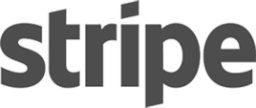We are passionate about our clients’ success
Get In Touch
What we do
Let us take the stress out of running your business
WHO WE SERVE
Life's better when people understand your needs
Restaurants
Allow us to serve you with expert accounting support and strategic guidance.
Healthcare
Stay financially healthy with expert, strategic guidance.
Service-based Businesses
Get back to the business you love...let us handle the accounting.
People
We are here to help reduce the burden of tax season.

ebook
Why your small business should invest in technology
See how the right technology can have a big impact on your small business.
Download the eBook about Why your small business should invest in technologyIn the Loop
Your magazine of
personal finance

From the firm: Planting seeds for success
We recognize that the steps we take today inspire our impact for tomorrow.
Read more about From the firm: Planting seeds for success> ➞Debt management for business owners
Learn what you need to know to manage your business debt effectively.
Read more about Debt management for business owners> ➞Sustainability: Why it matters
Consumers want to purchase from sustainable businesses. Discover what that means for you.
Read more about Sustainability: Why it matters> ➞QuickReads
Let's talk business
WHO WE WORK WITH















